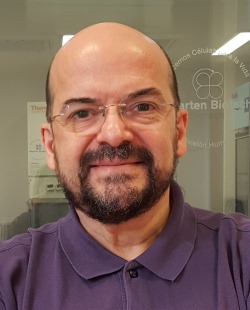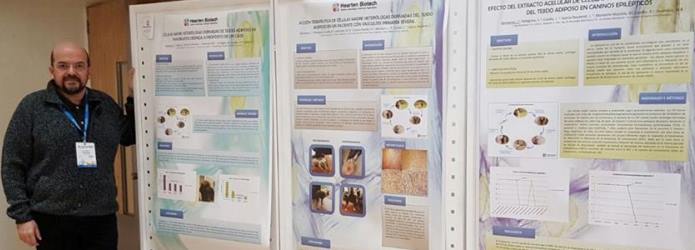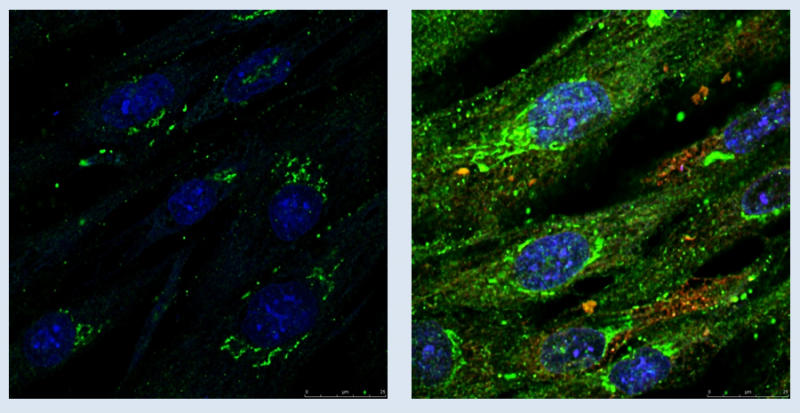Вы здесь
Electricity and Stem Cells: Old Signal for New Therapies
Stem cells are very sensitive sensors, able to detect a myriad of minimal changes in their environment. In vitro and in vivo, stem cells react to different stimuli by migrating, dividing, dying, changing their secretory profile and/or modifying their own shape.
All these actions are the detectable expression of cell’s ability to quickly and specifically modify their gene expression. This dramatic modulation of genetic information and its translation has as its main objective to restore normal function at the site of an injury.
Electrical stimulation is a well-known trophic factor for different tissues. Endogenous bioelectric currents are involved in normal tissue function and repair. Specific ion channels and pumps within cell membranes generate bioelectric signals. Its action is evident, but not limited to, the nervous system and muscular tissue. Although the mechanisms underlying the effects of electrical stimuli are not totally understood, it is clear that they affect cellular proliferation, hypertrophy and apoptosis [1].
Electrical stimulation or “electrotherapy” is widely applied in human medicine, especially in neuromuscular disorders. Electricity is used in rehabilitative medicine due to its ability to restore muscle function through induction of new blood vessel formation - angiogenesis - and the promotion of cell proliferation [2]. In a similar manner, electrical treatment improves wound healing and osteogenesis. All previous data indicate a clear involvement of stem cells in this regenerative process, and an action of electrical stimulation on stem cells.
Cell movement and cell positioning are important components of regeneration and the right bioelectric signals can get regenerative repair cells to where they need to be. Bioelectric signals can turn up or turn off proliferation. They can cause new blood vessels to grow or can suddenly halt blood supply, as may be needed in the case of starving cancer tumors. Certain bioelectric signals can even affect cell elimination through programmed cell death. Experiments have proven the ability of bioelectric stimulation to induce or augment regeneration, which is our area of greatest research interest.
 Electrical stimulation induces dramatic changes in stem cell activity toward a clear regenerative phenotype. Exogenous electrical currents activate and mobilize neural stem cells in vitro and in vivo. Invasive and non-invasive electrical stimulation of the central nervous system have showed, both in animal models and in patients, enhancement of neurogenesis and cellular plasticity [3].
Electrical stimulation induces dramatic changes in stem cell activity toward a clear regenerative phenotype. Exogenous electrical currents activate and mobilize neural stem cells in vitro and in vivo. Invasive and non-invasive electrical stimulation of the central nervous system have showed, both in animal models and in patients, enhancement of neurogenesis and cellular plasticity [3].
Depending on the intensity of the electrical stimulation they receive, mesenchymal stem cells proliferate and modify their phenotype. Short time treatments let stem cells pre-differentiate into cardiac cells [4] . Preconditioning treatment with electricity promotes stem cell survival post-transplantation, enhancing their beneficial effects. Electrical stimulation induces the production of cardiac proteins that facilitate cell engraftment and survival. This action is not limited to the heart or to mesenchymal stem cells. Induced pluripotent stem cells respond to electrical stimulation in a similar manner, and fibroblasts, the main cell type in connective tissue, show cardiac differentiation as well [1].
Electrical stimulation acts directly and indirectly on stem cells. In a rat model, when the stimuli were delivered across a post-infarct scar, an enhanced presence of hematopoietic stem cells in the lesion was detected. These cells appear to be associated with an increase of local vascular endothelial growth factor levels and new vascular structures [5]. Today, we accept that cells associated with the vessel wall – pericytes - are the most relevant mesenchymal stem cell population. In this way, electrical stimulation thus not only induces proliferation and differentiation but the recruitment of different stem cell types in the area to repair the lesion.
Electro stimulation of scaffolds and/or cell-scaffold constructs opens a new area in tissue engineering developments. We are optimistic that the combination of physical and biochemical signals with stem and non-stem cells can accelerate the generation of artificial tissues, specifically for cardiac and skeletal muscle.
“Electroceuticals” is a word that encompasses all medical devices which employ electrical stimulation to affect and modify functions of the body. In near future medicine, miniaturized electroceutical devices will open a new perspective. Many of these devices act on stem cells through the mechanisms above mentioned. Applied on body’s surface or implanted in target organs, they will deliver specific electrical stimuli to modulate stem cells number, differentiation grade, biological activity and even proliferation or survival.
Electricity and electroceutical devices appear to be a selective non-drug approach to resolve a huge amount of physical conditions. The regulation of hair follicle activity, the induction of muscle proliferation in a weak aneurysm wall, the differentiation of neural progenitors after stroke, or the induction of differentiation of cancer stem cells, are just some applications of this impressive therapeutic tool.
By learning to modulate the bioelectrical signals that control regeneration promoting protein expression, stem cell recruitment, cell proliferation and differentiation, we may gain an incredible new set of tools to repair failing organs to not only extend life but restore a high quality of life with full functioning regenerated organs.

References
- J.A. Genovese, C. Spadaccio, J. Langer, J. Habe, J. Jackson, and A.N. Patel, Electrostimulation induces cardiomyocyte predifferentiation of fibroblasts. Biochemical and Biophysical Research Communications 370 (2008) 450-5. doi:10.1016/j.bbrc.2008.03.115
- U. Carraro, K. Rossini, W. Mayr, and H. Kern, Muscle fiber regeneration in human permanent lower motoneuron denervation: relevance to safety and effectiveness of FES-training, which induces muscle recovery in SCI subjects. Artificial Organs 29 (2005) 187-91. doi:10.1111/j.1525-1594.2005.29032.x
- Y. Huang, Y. Li, J. Chen, H. Zhou, and S. Tan, Electrical Stimulation Elicits Neural Stem Cells Activation: New Perspectives in CNS Repair. Frontiers in Human Neuroscience 9 (2015) 586. doi: 10.3389/fnhum.2015.00586
- J.A. Genovese, C. Spadaccio, E. Chachques, O. Schussler, A. Carpentier, J.C. Chachques, and A.N. Patel, Cardiac pre-differentiation of human mesenchymal stem cells by electrostimulation. Frontiers Bioscience (Landmark Ed) 14 (2009) 2996-3002. [PDF]
- C. Spadaccio, A. Rainer, F. De Marco, M. Lusini, P. Gallo, P. Sedati, A.O. Muda, S. De Porcellinis, C. Gregorj, G. Avvisati, M. Trombetta, M. Chello, E. Covino, D.A. Bull, A.N. Patel, and J.A. Genovese, In situ electrostimulation drives a regenerative shift in the zone of infarcted myocardium. Cell Transplant 22 (2013) 493-503. http://dx.doi.org/10.3727/096368912X652977



